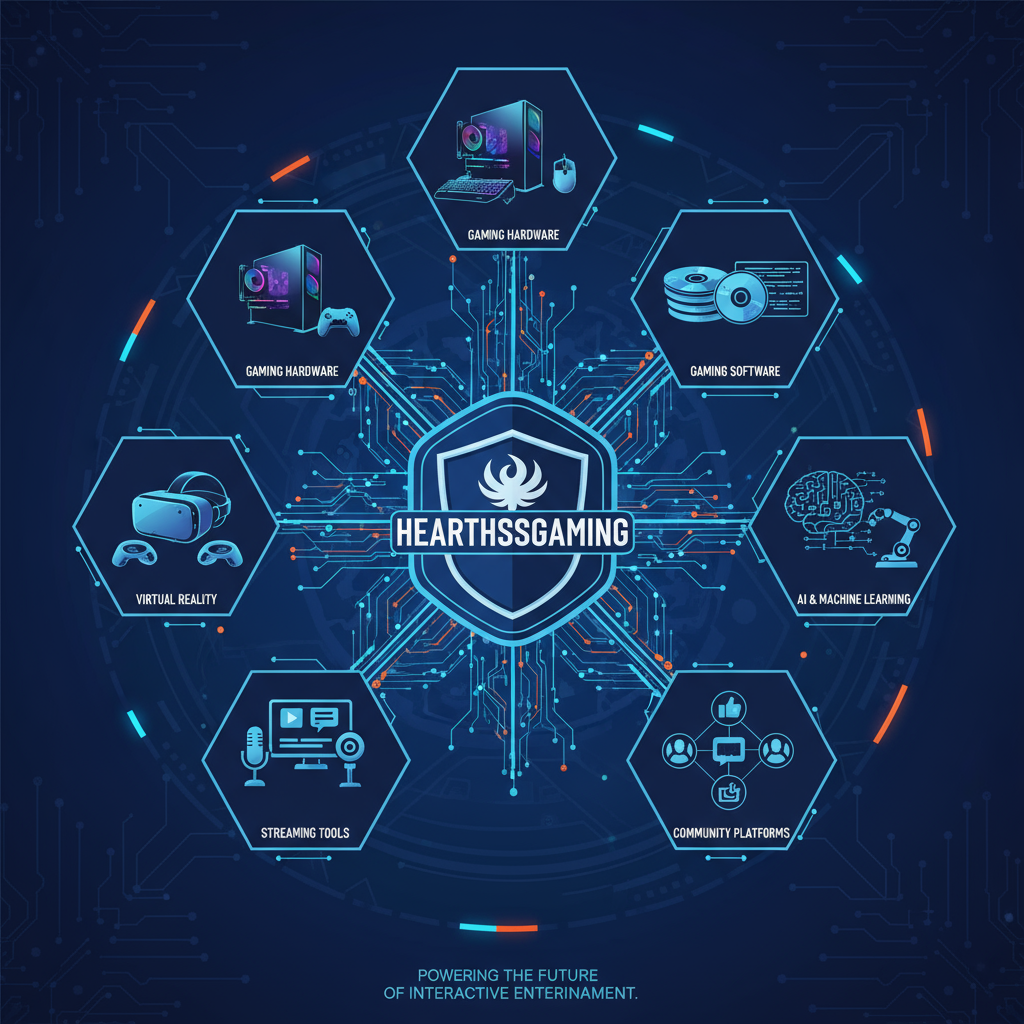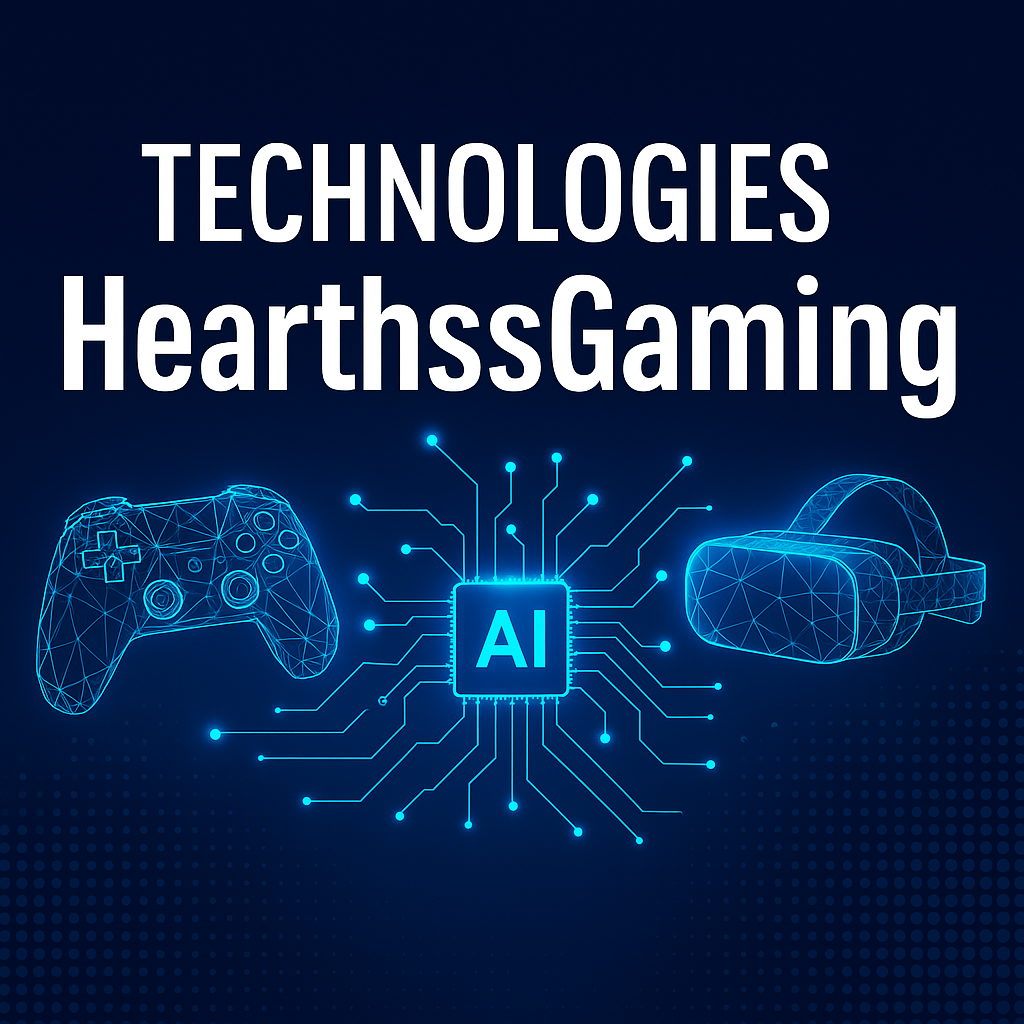Technologies HearthssGaming: The Ultimate Guide to Innovations Reshaping Gaming
The world of gaming is changing at a furious pace, and some of the phrases that have been repeatedly appearing on weblogs and forums are technologies hearthssgaming. At its simplest, it can be said that this term can be applied to the technological ecosystem that drives the games of the present day, encompassing cloud servers, high-quality graphics, latency minimization, accessibility design, and VR/AR comfort.
This guide will not be just an eye-catching hype. You will be introduced to the pillars of technologies hearthssgaming, will view real-life examples, compare and contrast trade-offs, and will have answers to the frequently asked questions. It is made to suit a player who wonders about a more fluent gameplay or a developer who wants to consider their next release
Core Pillars of Technologies Hearthssgaming
Cloud Game Servers
Games no longer live on a single console or PC. Cloud servers handle matchmaking, scaling, and multiplayer lobbies across regions. Platforms like AWS GameLift, Google Agones, and Azure PlayFab have turned multiplayer into a global service. The result: lower downtime, faster match creation, and global reach.
Advanced Graphics
From ray tracing for lifelike shadows and reflections to AI upscaling like DLSS and FSR, technologies hearthssgaming has made visuals cinematic while keeping frame rates playable. Upscaling allows mid-range hardware to enjoy high settings without breaking performance.
Latency Reduction
Latency is the invisible enemy of gamers. Solutions like NVIDIA Reflex cut input lag, while rollback netcode ensures fighting games feel responsive even on shaky connections. These innovations turn online play from frustrating to seamless.
Edge Computing & 5G
Placing computation closer to the player through edge servers reduces ping, while 5G networks unlock reliable, low-latency mobile gaming. Combined, they’re paving the way for competitive gaming on handheld and mobile devices.
Accessibility
Technologies hearthssgaming isn’t just about performance—it’s also about inclusion. Tools like adaptive controllers, customizable UI, and accessibility guidelines ensure gaming is enjoyable for players of all abilities.
VR/AR Comfort
Virtual reality immersion is only possible when comfort issues are addressed. Developers are adopting snap turns, teleport locomotion, and vignette systems to reduce motion sickness, making VR games more enjoyable for wider audiences.
Cloud Platforms Compared
| Platform | Core Strengths | Ideal For | Weaknesses |
| AWS GameLift | Managed fleets, autoscaling, global AWS infra | Battle royales, session-heavy games | Tied to AWS ecosystem |
| Google Cloud + Agones | Open-source Kubernetes orchestration | Studios with DevOps skills | Requires more in-house expertise |
| Azure PlayFab | End-to-end live-ops tools, matchmaking, analytics | Games with ongoing updates | Can be costly at scale |
Graphics & Performance in Action
Real-Time Ray Tracing
Ray tracing allows reflections in water, dynamic shadows from moving light sources, and accurate global illumination. Once limited to cinematic rendering, it’s now a staple in flagship games.
Also Read: https://larvesta.com/is-baldurs-gate-3-crossplay/
AI Upscaling
- DLSS (Deep Learning Super Sampling): Uses AI to reconstruct higher-resolution frames, effectively boosting FPS without visual loss.
- FSR (FidelityFX Super Resolution): Open-source and works across GPUs, making high-quality visuals accessible to more players.
Player Benefits
- Higher FPS without sacrificing fidelity.
- Consistency across hardware tiers.
- Longer hardware lifespan due to optimization.
Real-World Examples
- Competitive Shooter: A game integrates NVIDIA Reflex and sees average input latency drop by 25 ms, giving pro players faster reaction times.
- Fighting Game: Developers implement rollback netcode, eliminating the “teleport effect” during high-ping matches. Players report smoother online tournaments.
- Mobile RPG: A title adopts edge servers in Asia-Pacific, reducing average latency from 120 ms to 40 ms. Engagement rises as players enjoy more responsive controls.
- VR Exploration Game: Designers add comfort options like vignette FOV narrowing during movement. Refund requests citing motion sickness fall by 35%.
Trade-Offs to Consider
| Technology | Advantages | Trade-Offs |
| Ray Tracing | Realism unmatched by rasterization | Demands top-tier GPUs |
| AI Upscaling | Higher FPS on mid-range hardware | Occasional visual artifacts |
| Rollback Netcode | Consistent gameplay feel | Complex implementation |
| Edge Computing | Drastically reduces ping | Dependent on local infra |
| Accessibility Tools | Expands player base | Requires extra dev cycles |
Common Challenges & Fixes
- Lag despite good ping: Check system latency, not just network. Tools like Reflex highlight render queue bottlenecks.
- VR sickness complaints: Offer comfort settings by default, including snap turns and teleportation movement.
- High cloud costs: Scale conservatively and monitor regional usage before expanding fleets.
- Accessibility added too late: Plan from the beginning—UI scaling and remappable controls are easier when baked into design.
The Future of Technologies HearthssGaming
AI will be at the forefront in the future, not only in graphics but also in difficulty customisation, intelligent NPCs, and detection of cheating. 5G growth will make handheld eSports possible, and cross-platform continuity will not be an aspect of the game, but a necessity.
The issue of access will become a compliance standard: players will demand marked accessibility among the storefronts, and studios will be known as inclusive. Hardware will also be improved VR and AR lighter headsets, increased refresh rates, and more comfortable mechanics.

Conclusion
Technologies hearthssgaming is not a mere jargon but the future of gaming. Cloud servers provide the ability to scale effectively, graphics innovations strike a balance between the use of beauty and performance, rollback netcode is reinventing online play, and VR comfort is opening the door to immersive experiences. And combine accessibility and edge computing, and you have a comprehensive approach to game design that is useful to both players and studios.
FAQs – Technologies Hearthssgaming
Q1. What is technologies hearthssgaming?
It’s the collection of innovations driving modern games, from cloud servers and graphics engines to latency reduction, accessibility, and VR comfort.
Q2. How can I reduce lag in competitive games?
Enable features like NVIDIA Reflex, use a wired connection, and activate AI upscaling to ensure higher, steadier frame rates.
Q3. Why is rollback netcode so important?
It predicts player inputs and corrects them in real time, making online matches smoother even on poor connections.
Q4. Which cloud service is best?
It depends: AWS offers scalability, Google gives Kubernetes flexibility, and Azure PlayFab bundles live-ops tools.
Q5. How are accessibility features shaping the future?
They’re broadening the audience by making games playable for people with disabilities. This isn’t just a bonus—it’s becoming a design standard.
